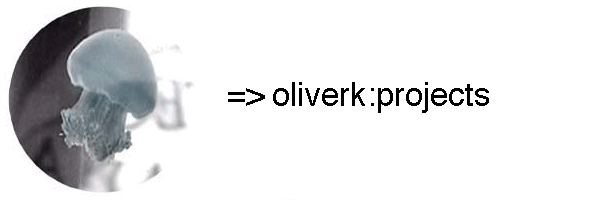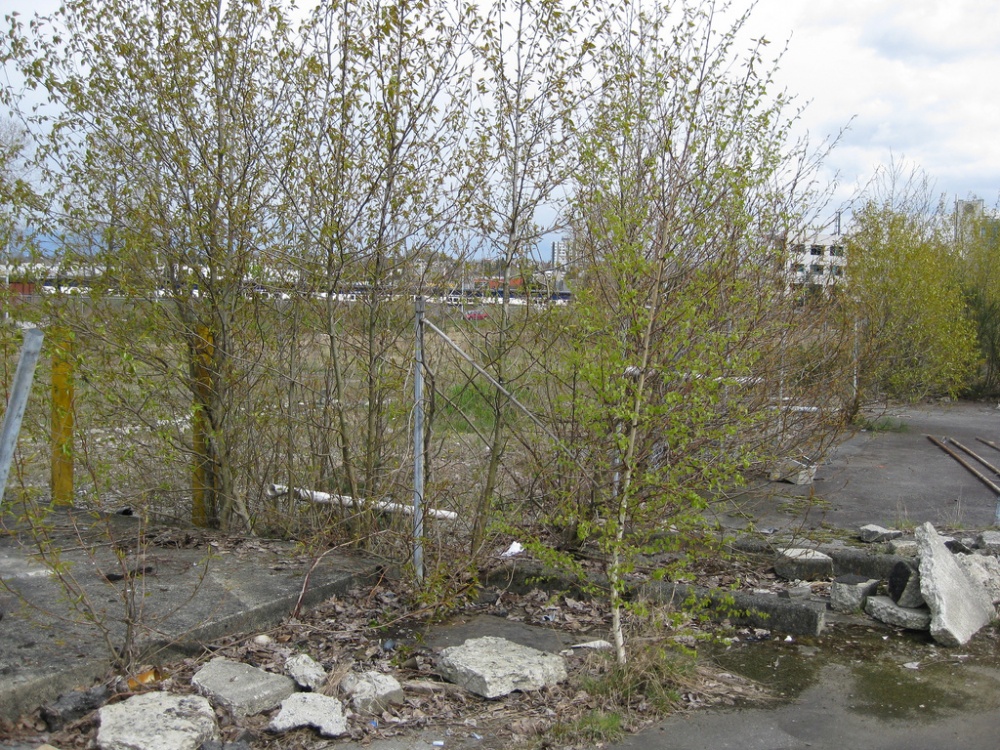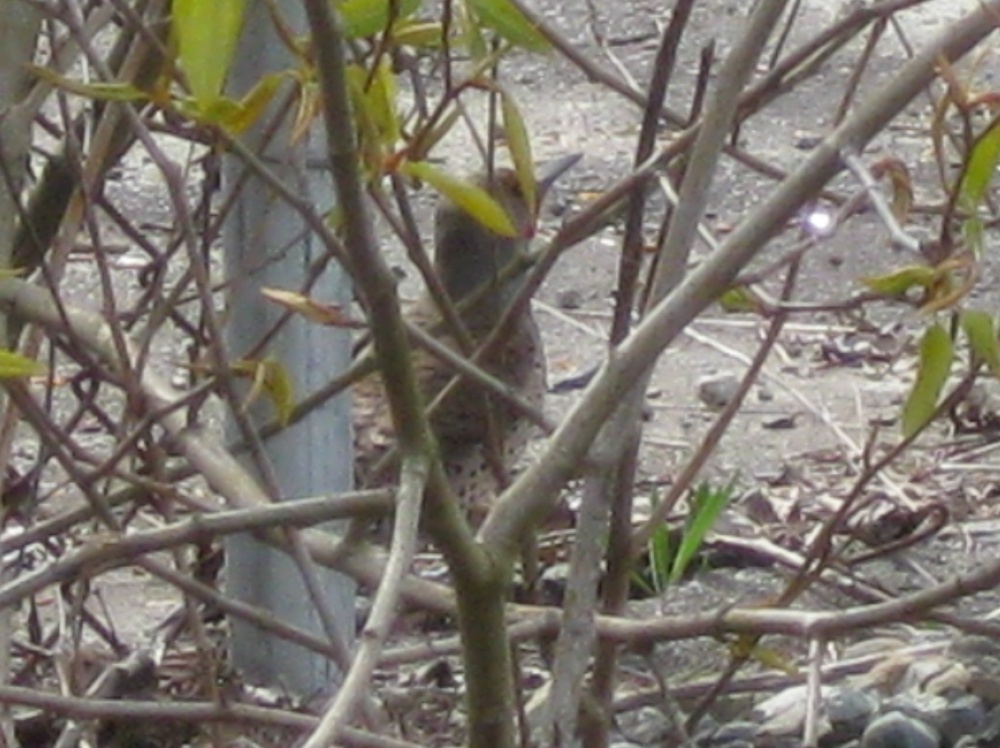The Future of Vancouver’s Urban Landscape: Open Source City (essay)
This article first appeared in the Vancouver Observer on May 31st 2011
But is this really the right way to go?
What would it look like if we freed up parts of Vancouver’s urban environment from the control of conventional planning and sat back and watched what happened? The results could surprise us, and might not be as bad as we fear.
Like many cities, our highway rights of way and abandoned industrial lands would get covered in vegetation almost as soon as we turn our backs, softening the outlines of our architectural ruins and hiding our trash. Though the topsoil may long ago have been scraped away and the earth covered in concrete, this terrain vague soon gets colonized by a specially adapted cast of native and exotic species, which thrive on disturbance. For them, our rubble is just so much slow-release fertilizer; our wastelands, a virgin habitat.
And it’s already happening. We’ve all seen these areas of urban savanna; the psychedelic yellow expanses of Scotch broom and forbidding thickets of Himalayan blackberry, interspersed with fragrant groves of cottonwoods and birches. On damper sites, alders and big-leaf maples grow lushly, mixing in with runaways from cultivation, such as filberts, Daphne shrubs and even hop vines that twine up from the sediments of long-vanished breweries. Feral apple trees sprout up under bridges from tossed-away cores, and Spanish bluebells carpet the gullies among the rusting shopping carts and construction debris.
Though non-native species are a permanent part of these co-mingled meta-ecologies, many plants and animals that are indigenous will hold their own and even thrive here. In the most desolate of Vancouver’s industrial zones, I’ve seen white-throated sparrows, goldfinches and northern flickers flitting through shrubbery of European and Asian origin, while native red-tailed hawks soar over weedy railway corridors, hunting for Norway rats and pigeons. In the same neighborhood, bald eagles have set up a nest just a hundred meters from a fume-spewing paint plant, and after dark it’s not uncommon to spot a coyote, sauntering past the warehouses and factories.
Though perhaps untidy and a little unpredictable, I believe we need these interstitial places to keep our cities healthy. Such ‘temporary autonomous zones’ and non-intentional parks challenge our pervasive sense of self importance, of needing to know exactly what’s going to happen next.
These emergent, rapidly evolving landscapes present us with the Zen question: “What can we not do?” Perhaps we can afford to give up a little control to let this ‘second’ nature take its course. We’ll need to learn to tolerate a few weeds, a little uncertainty and a little mess, but we might just learn something.
And what of the human side of the equation? After all, we’re part of the urban ecology too. Perhaps we need to embrace a new planning model, a kind of ‘un-planning,’ which encourages those of us who live around disused tracts of land to take responsibility for them. We need to revive the idea of an urban commons and allow some parts of our city to evolve incrementally, free from the smothering hand of centralized planning, so we can observe guerrilla gardens, neighborhood orchards and ad-hoc community hang-outs designing themselves, via self-organizing community processes. Such an ‘open source’ approach to landscape creates a ‘lab’ for urban innovation, each place evolving as a unique interplay between the local ecology and the people who care for it.
Open source landscape has already happened in the few places where it’s been allowed to evolve. Initially spearheaded by squatters, Vancouver’s thriving community garden scene is now an international showcase for grassroots planning and neighborhood scale sustainability. My own involvement over the past 20 years with the founding of East Van’s Cottonwood Community Gardens and the Means of Production Project have convinced me of the profound potential of community-based land stewardship. These projects thrive because they are adaptive and generative. They constantly evolve as a function of the people who participate in them; every season of human energy and plant growth becomes another layer in a rich palimpsest of place.
And why stop at gardens and parks? Why not ‘open source’ some of our greatest urban challenges - like housing? Some European cities already allow people to construct small, seasonal dwellings next to their community garden plots, making it possible to spend nights sleeping close to nature, right in town. These are real opportunities for community-building, not to mention the reductions in carbon emissions and traffic congestion we might see when people start spending their spare time closer to home.
How many other ‘open-source’ solutions might Vancouverites come up with if they just had more access to vacant land to try out new ideas? The city’s interstitial spaces are ripe with possibility, if only we enforced some by-laws a little less stringently and waited to see what emerged. An open source city needs to reinvent itself continuously. Open source landscapes let people and nature come together in interesting new combinations. Surely we should be encouraging more of that to happen.
projects:
events:
-
Thursday, March 20, 2025 - 12:00 - 13:00
-
Tuesday, April 26, 2022 - 03:30 - 16:30
-
Friday, April 1, 2022 - 18:00 - Monday, April 4, 2022 - 12:00
-
Friday, April 1, 2022 - 09:00 - Sunday, July 31, 2022 - 17:00
-
Wednesday, December 8, 2021 - 21:45 - 22:45
-
Friday, November 5, 2021 - 13:45 - 16:00
-
Tuesday, October 12, 2021 - 13:30 - 14:15
-
Monday, June 28, 2021 - 10:00 - 11:00
-
Thursday, March 19, 2020 - 12:00 - Sunday, March 22, 2020 - 00:00
-
Friday, October 25, 2019 - 21:00 - Sunday, October 27, 2019 - 23:00
-
Thursday, August 1, 2019 - 12:00 - Wednesday, October 2, 2019 - 00:00
-
Friday, April 26, 2019 - 21:30 - Saturday, April 27, 2019 - 00:30
-
Friday, March 29, 2019 - 23:00 - Sunday, March 31, 2019 - 21:00
-
Sunday, June 24, 2018 - 12:00 - Saturday, July 7, 2018 - 22:00
-
Friday, June 22, 2018 - 12:00 - Sunday, September 30, 2018 - 20:00
-
Saturday, June 9, 2018 - 12:00 - 19:00
-
Saturday, May 19, 2018 - 15:00 - Sunday, November 11, 2018 - 22:00
-
Sunday, April 22, 2018 - 13:00 - 23:00
-
Friday, April 13, 2018 - 22:00 - Sunday, April 15, 2018 - 17:00
-
Friday, January 26, 2018 - 09:30 - 11:00
-
Saturday, July 1, 2017 - 03:00 - Sunday, August 27, 2017 - 03:00
-
Friday, May 26, 2017 - 12:00 - Saturday, May 27, 2017 - 15:00
-
Sunday, May 14, 2017 - 13:00 - 17:00
-
Sunday, April 30, 2017 - 20:00 - 22:30
-
Sunday, April 9, 2017 - 18:00 - 20:00
-
Tuesday, November 15, 2016 - 14:00 - 16:00
-
Tuesday, April 12, 2016 - 17:00 - 18:30
-
Tuesday, March 1, 2016 - 12:00 - Monday, June 6, 2016 - 21:00
-
Thursday, February 25, 2016 - 14:15 - 14:30
-
Tuesday, February 16, 2016 - 14:15 - Wednesday, February 17, 2016 - 00:45
-
Wednesday, December 2, 2015 - 22:00 - Sunday, December 6, 2015 - 22:00
-
Saturday, November 21, 2015 - 19:00 - 21:00
-
Friday, September 18, 2015 - 03:00 - Monday, December 7, 2015 - 02:59
-
Saturday, May 16, 2015 - 16:00 - 19:00
-
Friday, April 17, 2015 - 19:00 - Saturday, April 18, 2015 - 22:00
-
Wednesday, February 25, 2015 - 03:00 - Wednesday, March 25, 2015 - 03:00
-
Tuesday, November 11, 2014 - 20:00 - Wednesday, November 12, 2014 - 00:00
-
Monday, September 22, 2014 - 12:00 - Sunday, September 28, 2014 - 02:00
-
Wednesday, July 30, 2014 - 12:00 - Monday, August 4, 2014 - 01:00
-
Tuesday, July 22, 2014 - 13:00 - Friday, July 25, 2014 - 19:00
-
Wednesday, March 19, 2014 - 21:00 - 22:00
-
Saturday, March 15, 2014 - 12:00 - Friday, March 28, 2014 - 12:00
-
Thursday, March 6, 2014 - 19:00 - 21:00
-
Tuesday, February 25, 2014 - 14:00 - 15:15
-
Friday, October 25, 2013 - 11:30 - Saturday, October 26, 2013 - 19:00
-
Saturday, September 28, 2013 - 20:30 - 23:30
-
Monday, September 16, 2013 - 03:00 - Wednesday, September 25, 2013 - 02:59
-
Sunday, May 26, 2013 - 18:00 - 21:00
-
Saturday, May 25, 2013 - 14:00
-
Thursday, May 9, 2013 - 18:00
-
Thursday, February 21, 2013 - 22:00 - Friday, February 22, 2013 - 00:00
-
Thursday, February 7, 2013 - 17:00 - 19:00
-
Tuesday, December 4, 2012 - 22:30
-
Sunday, September 30, 2012 - 21:30 - Monday, October 1, 2012 - 00:00
-
Wednesday, September 26, 2012 - 20:00 - Thursday, September 27, 2012 - 00:00
-
Saturday, August 25, 2012 - 16:00 - 19:00
-
Friday, June 1, 2012 - 14:00 - 16:00
-
Friday, February 17, 2012 - 21:00
-
Thursday, January 26, 2012 - 15:00 - 17:00
-
Friday, November 18, 2011 - 21:30 - Monday, November 21, 2011 - 00:00
-
Sunday, September 18, 2011 - 13:00
-
Saturday, September 17, 2011 - 13:00 - 17:00
-
Saturday, June 25, 2011 - 13:00
-
Thursday, June 23, 2011 - 22:00
-
Wednesday, June 22, 2011 - 22:00
-
Thursday, May 5, 2011 - 22:00
-
Thursday, October 28, 2010 - 22:00 - Friday, October 29, 2010 - 01:00
-
Tuesday, June 1, 2010 - 21:00 - Wednesday, June 2, 2010 - 00:00
-
Friday, April 16, 2010 - 23:00
-
Wednesday, March 31, 2010 - 22:00 - Thursday, April 1, 2010 - 00:00




